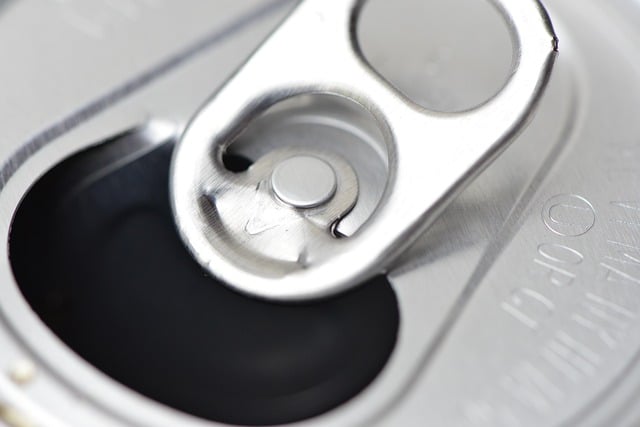
Australia Aluminium Recycling: A Hidden Crisis? 🥫
Australia Aluminium Recycling 🥫: We really need to bring aluminium recycling back home. In this blog, you will find out how we, as advocates for a more circular economy, should approach aluminium recycling.
Few things in the world of recycling surprise me, but I was genuinely shocked to learn that Australia recycles virtually zero aluminium onshore. Instead, nearly all of it is shipped overseas for processing.
This is staggering when you consider that aluminium is one of the most recyclable materials on the planet. Experts estimate that over 75 per cent of all aluminium ever produced is still in circulation today.
>Download Now: Free PDF Business Owners Guide To Commingled Recycling Bin Services
The benefits of aluminium recycling
Aluminium is a true recycling success story. It can be recycled indefinitely without losing quality, and doing so saves up to 95 per cent of the energy required to produce new aluminium from bauxite.
Globally, more than 30 million tonnes of aluminium scrap are recycled each year, making it one of the most widely reused materials. Yet, in Australia, we are missing out on these environmental and economic benefits because we lack the infrastructure to recycle aluminium domestically.
Beyond energy savings, recycling aluminium reduces greenhouse gas emissions, minimises landfill waste and decreases the need for environmentally destructive bauxite mining. It also helps create sustainable jobs in the recycling and manufacturing sectors, provided the right policies and investments are in place.
Australia aluminium recycling: The root of the problem
So why doesn’t Australia recycle its own aluminium? The issue can largely be traced back to the collapse of the local car manufacturing industry over the past two decades.
When this industry shut down, two crucial aluminium rolling mills also closed, taking with them Australia’s ability to process scrap aluminium onshore.
Unlike smelters that refine raw bauxite into aluminium, recycling facilities require specialist equipment to handle contaminated or mixed scrap.
Without these facilities, Australian recyclers are left with no choice but to export both pre- and post-consumer aluminium scrap overseas to countries like Hong Kong and Indonesia.
The lack of domestic remelting infrastructure also means that valuable aluminium scrap often ends up in landfills, further compounding waste management issues.
In many cases, businesses and individuals may not even realise that the aluminium they dispose of isn’t being recycled locally.
The cost of inaction
This reliance on exporting scrap aluminium is costly in more ways than one:
- Higher Manufacturing Costs: Without local recycled aluminium, Australian manufacturers must rely on expensive imported aluminium, making domestic production less competitive.
- Increased Energy Use: Over 10% of Australia’s electricity goes into smelting bauxite into primary aluminium. Recycling would dramatically cut this figure, lowering emissions and reducing strain on the energy grid.
- Fossil Fuel Waste: Shipping aluminium scrap overseas adds unnecessary carbon emissions to the recycling process, negating some of the environmental benefits of recycling in the first place.
- Lost Economic Opportunities: Instead of creating jobs and industry growth locally, Australia effectively outsources both the environmental and economic benefits of aluminium recycling to other countries.
What can be done to strengthen aluminium recycling in Australia?
If Australia is serious about achieving a circular economy, we need to invest in local aluminium recycling infrastructure. Here’s what should happen:
- The government needs to make a better investment. Landfill levies each year collect billions of dollars. Redirecting a portion of this to support aluminium recycling facilities would create jobs and improve sustainability.
- We need more industry collaborations. Some companies, like Capral Aluminium and Rio Tinto, are already taking small steps toward closed-loop recycling. This effort needs to be scaled up nationwide.
- Create a cost-benefit analysis. Policymakers should commission a detailed study on the financial and environmental benefits of reintroducing aluminium recycling in Australia. The numbers would likely prove that keeping aluminium recycling onshore is a win-win solution.
- Work on providing public awareness and incentives. Greater consumer awareness and financial incentives for businesses that use recycled aluminium could encourage more sustainable practices across industries.
- Implement stronger policies and regulations. Government mandates for using recycled aluminium in construction, packaging and manufacturing could stimulate demand for domestic recycling infrastructure.
Breaking the vicious cycle
The lack of domestic aluminium recycling is a symptom of a broader issue: Australia’s declining manufacturing sector. The less we manufacture, the less incentive there is to recycle locally. This leads to higher costs, making imported goods more attractive, and so the cycle continues. It’s time for a reset.
Investing in aluminium recycling infrastructure isn’t just about waste management—it’s about securing economic and environmental benefits for the future.
With strong government support, industry cooperation and public engagement, Australia could reclaim its ability to process aluminium onshore, leading to a more self-sufficient and sustainable economy.
If we want to build a truly circular economy, this is one of the key areas where change is needed. The question is, will policymakers step up to make it happen?
Or will Australia continue to send its valuable resources offshore, missing out on the economic and environmental advantages of local recycling?

Some key points to remember
- Australia recycles virtually no aluminium onshore, exporting nearly all scrap to countries like Hong Kong and Indonesia.
- Recycling aluminium saves 95 per cent of energy compared to producing new aluminium.
- The collapse of Australia’s car industry led to the loss of local recycling infrastructure.
- Exporting scrap results in higher costs, more emissions and lost economic opportunities.
- Solutions: Government investment, industry collaboration, public awareness and stronger policies.
- A circular economy needs domestic aluminium recycling—will policymakers take action or let Australia keep losing out?
Contacting Waster
Looking for a specific bin service? Check out our waste recycling shop and find the best deals in terms of pricing and services.
Also, please call 1300 WASTER (1300 927 837), or email us at enquiries@waster.com.au if you have any further questions.
Leave a Reply Cancel reply


